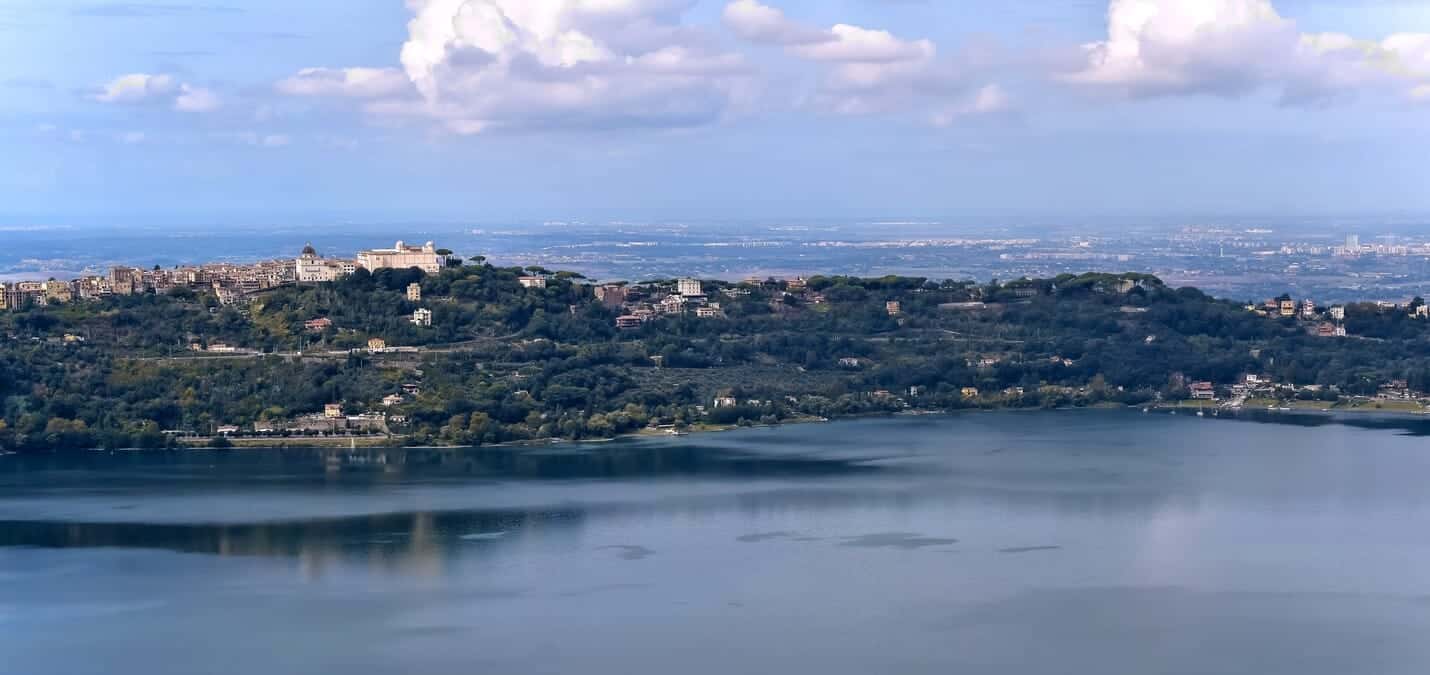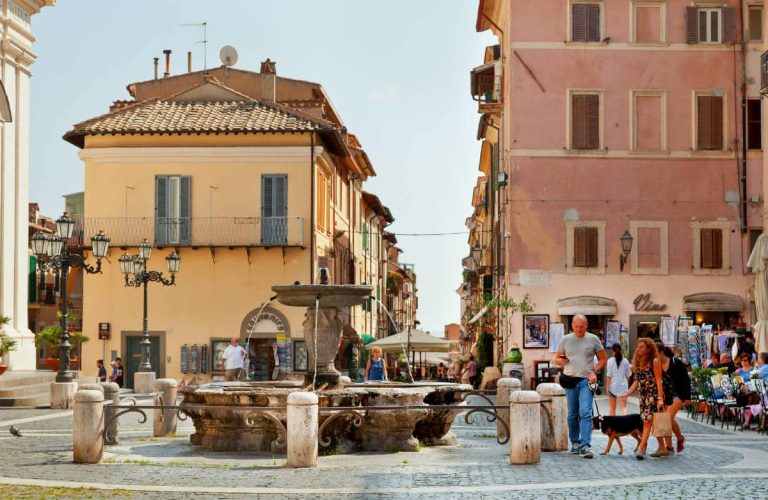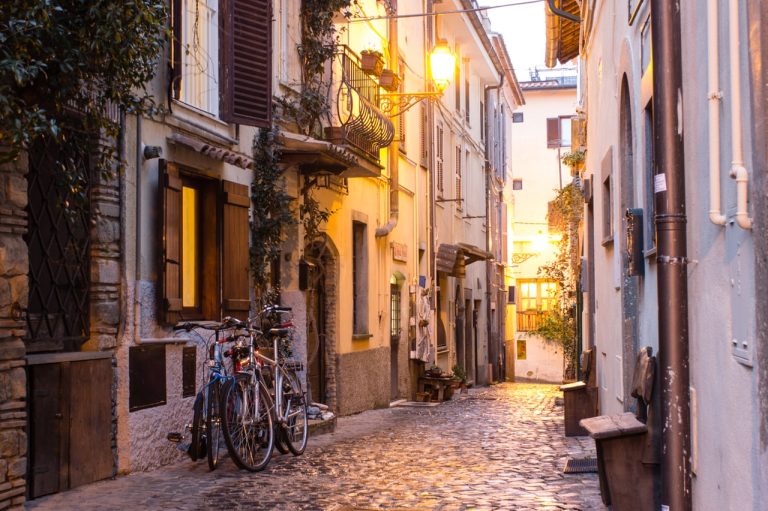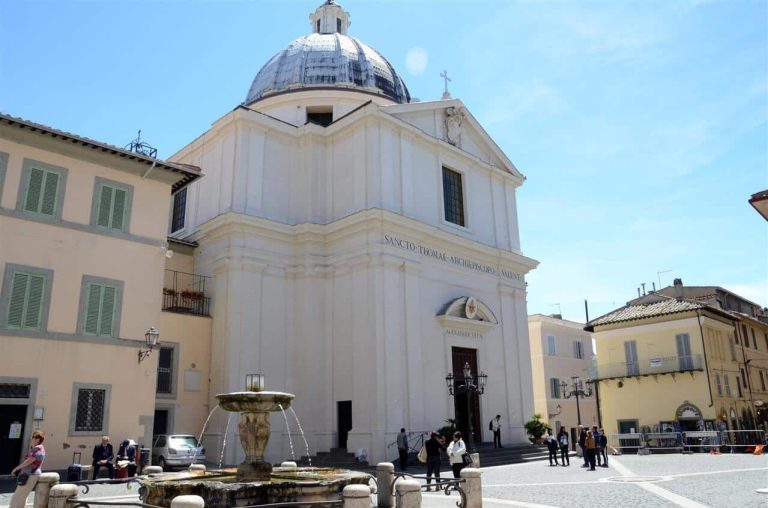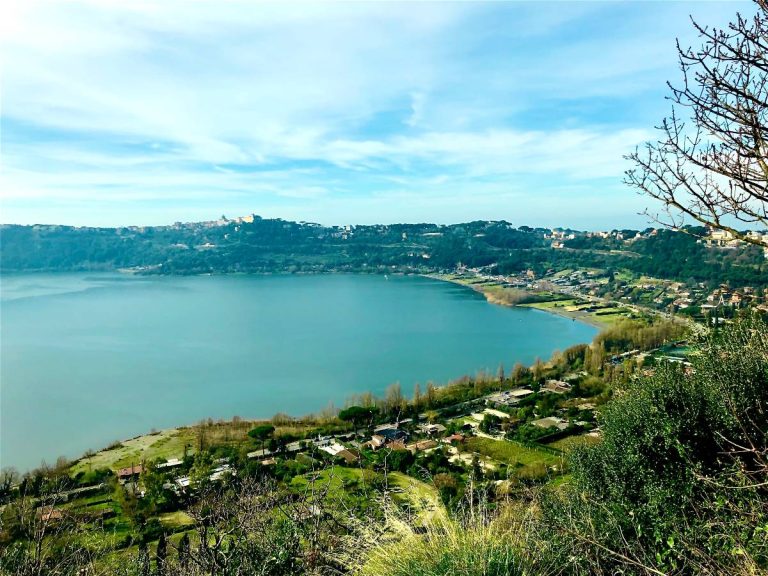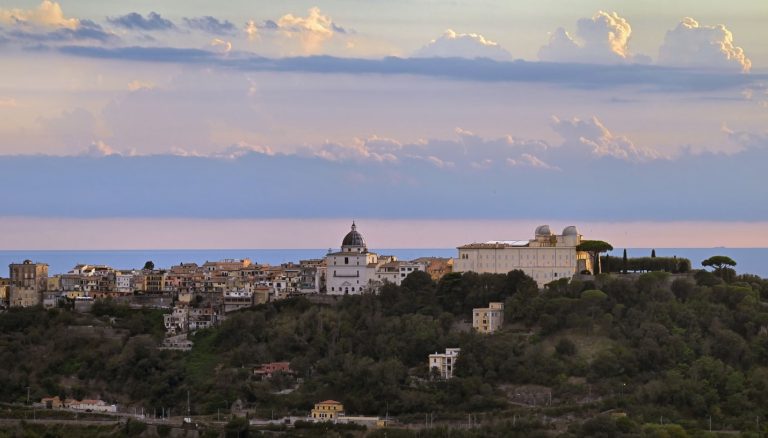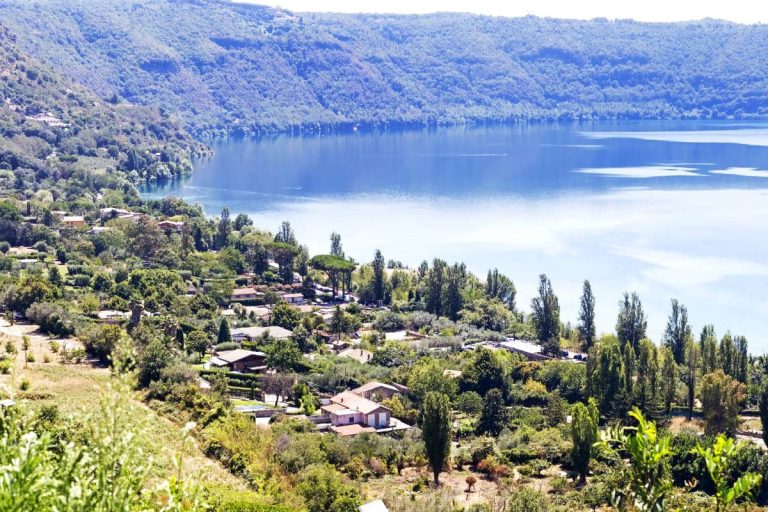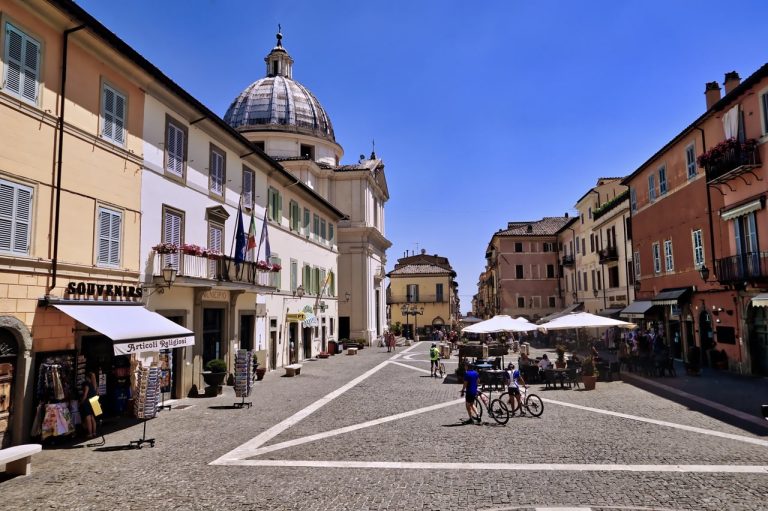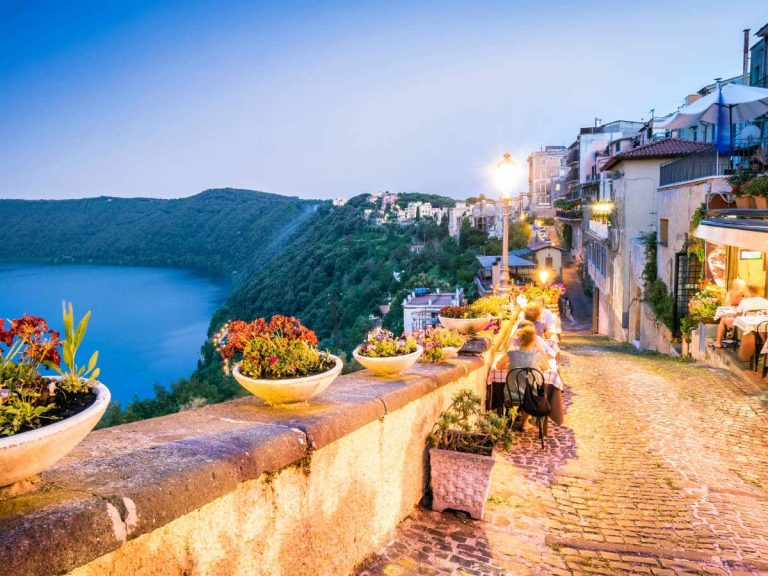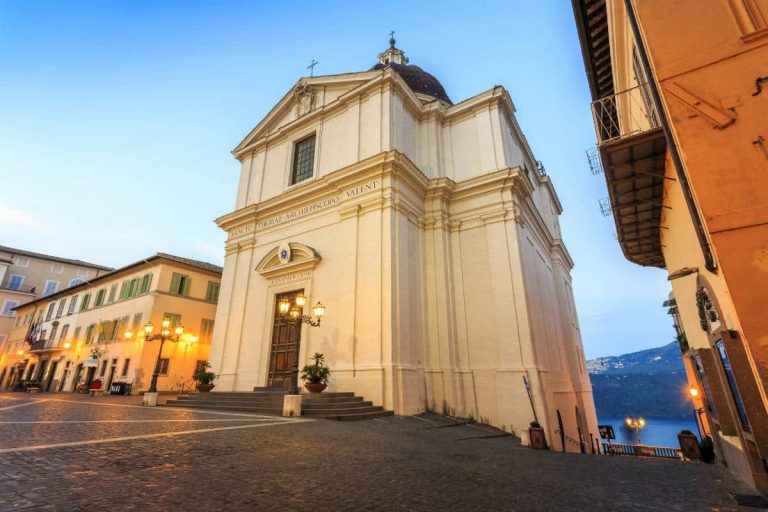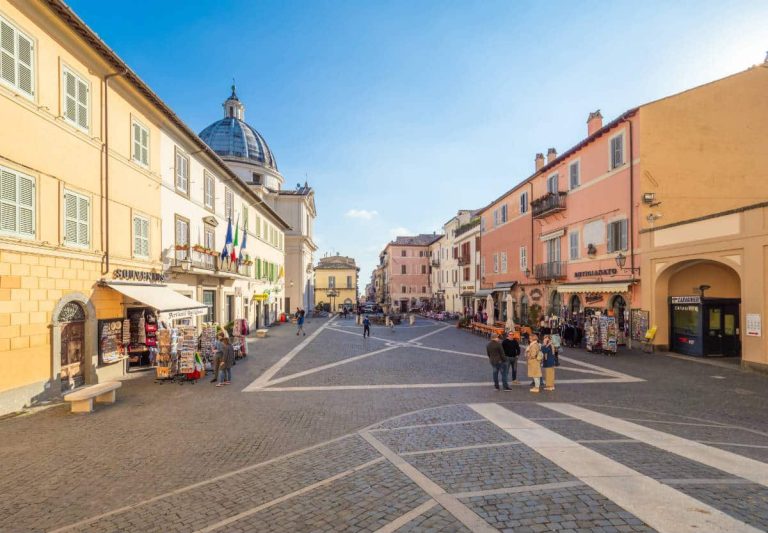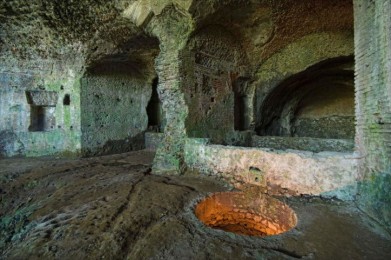Beautifully overlooking Lake Albano, Castel Gandolfo is known for the beauty of its natural surroundings and the elegance of its walled historic center, which has earned it the title of one of Italy's Most Beautiful Villages.
But most of all, the town is famous because the Papal Palace is located here, where since the early 17th century the popes have spent their summer rest period. On the other hand, Castel Gandolfo and its immediate surroundings were a favorite place for the construction of summer residences since ancient Rome, first by patrician families and emperors and later by members of the Roman high clergy and nobility.
Evidence of Roman times are the remains of the Villa of Domitian, of which the Bergantino Nymphaeum is a part. The villas and other residences that survive today - as well as the Church of St. Thomas of Villanova - have mostly been built since the 17th century, that is, since Castel Gandolfo became the property of the Holy See. But the history of Castel Gandolfo is much older, since its origins can be traced back to the city of Alba Longa.
Castel Gandolfo (Castrum Gandulphi in Latin) is best known for being the summer residence of the popes, near Rome. Its territory includes almost the entire coastal arc of Lake Albano. There are also several places of archaeological interest, among which the Lake Albano Emissary and the remains of the Albano Villa of Domitian should be mentioned, as well as naturalistic ones, since the area is included in the perimeter of the Castelli Romani Regional Park.
The waters of Lake Albano fed some millstones for grinding grain, which served the population of Castel Gandolfo and Albano, and some public wash houses. Just downstream from the Mole locality is the Laghetto di Turno, an ancient volcanic crater later filled with water, smaller in size than nearby volcanic lakes such as Albano, Vallericcia and Nemi. The Laghetto, reduced to an unhealthy swamp, was reclaimed around 1611 by order of Pope Paul V.
On the border with the territories of Marino and Rome flows the Fosso dei Preti, which originates in Marino territory at Quarto della Tribuna. Another ditch that originates from castle waters is the fosso de' Picelli, which flows toward Pomezia.
The territory of Castel Gandolfo, included in the Massa Caesariana, then became the property probably of the Counts of Tuscolo, and in the early 11th century it results in part of the abbey of Santa Maria di Grottaferrata, and then of the family of Genoese origin of the Gandolfi, who erected the Castrum that still bears their name. Pope Urban VIII (1623-1644) in 1628 was the first Pope to stay in Castel Gandolfo, in the villa he had built for himself as a cardinal: thanks to his interest, the Galleria di Sopra and the Galleria di Sotto, roads connecting Castel Gandolfo to Albano, so called because of the dense vegetation that lined them, were built. At the time of Pope Alexander VII (1655-1667), new works were carried out, which saw, among other things, the putting in place of the up road leading to Palazzolo skirting the crags of Lake Albano, called in ancient times precisely via Alessandrina, the arrangement of the Papal Palace (1660) and the building of the collegiate church of San Tommaso da Villanova (1658-1661) designed by the architect Gian Lorenzo Bernini, also author on behalf of Pope Alexander VII and the Chigi family of the Collegiate Church of Santa Maria Assunta in nearby Ariccia. Pope Benedict XIV (1740-1758) was very assiduous in his visits to Castel Gandolfo, having the small bell tower erected on the main facade of the Papal Palace and admitting for the first time local ladies to kiss the Pope's foot during their vacation. He also had the road leading to Marino, now State Road 216 Maremmana III, widened in 1740. When French soldiers entered Rome in February 1798, Albano established the Repubblica Albanense on February 18, 1798, affiliated with the Repubblica Romana (1798-1799), along with Frascati, Velletri and Marino. In this situation, Castel Gandolfo was united with the municipality of Albano, but on February 21 the castellans rose up against the French along with other inhabitants of the Castelli Romani.
With the return of Pope Pius VII, Castel Gandolfo was returned to the government of the Butler of the Sacred Palaces and this situation persisted until September 1870. Pope Gregory XVI (1831-1846) was particularly frequent in his sojourns at Castel Gandolfo, so much so that Giuseppe Gioacchino Belli ironically remarked in his Sonnets that he went to Lake Albano to fish 'e tinche pe'r fasting. On November 23, 1820, town councilor Angelo Antonio Iacorossi had the idea of having the world's first mailbox placed in Piazza della Libertà, which can still be found there today. On September 20, 1870, with the taking of Porta Pia and the entry of the bersaglieri into Rome, the Papal States officially ended. Pope Pius IX, who had last left Castel Gandolfo in May 1869, and his successors until 1929 never again set foot in the Papal Palace. On February 11, 1929, with the stipulation of the Lateran Pacts, Benito Mussolini granted the nascent Vatican City State possession of the Papal Palace with the adjoining villas, a total of forty-four hectares. Area that belongs, however, to the Italian State, with the servitude of extraterritoriality. In 1933 the Pontifical Astronomical Observatory was installed inside the Papal Palace, moved from the Vatican because of too much artificial light in Rome. In January 2008 it was announced that due to deteriorating visibility even in the Castelli Romani, the Observatory would be moved to the United States of America. During World War II On January 22, 1944, the Anglo-Americans carried out the landing at Anzio, bringing the Castelli Romani to the forefront of the fighting. On Feb. 1 Ariccia and Albano Laziale were bombed, with the destruction of the local convent of the Clarisse nuns located on the edge of the papal estate and the toll of 16 religious women killed; on Feb. 2 Marino was hit with several hundred casualties; and finally on Feb. 10 Anglo-American bombing struck the Collegio di Propaganda Fide in the Castellian territory, causing 500 civilian casualties. (See Bombing of Propaganda Fide.) In fact, in the extra-territorial area of the Papal Villas about 12,000 needy people took refuge during the entire war period and about forty children were born there.
The original nucleus of the settlement is represented by the Pontifical Palace, which was the ancient Castrum Gandulphorum, the stronghold of the Gandolfi family, and the collegiate church of St. Thomas of Villanova, which occupies the area of the ancient parish church of St. Michael. This core is now occupied by Freedom Square, the true heart of the historic center. The main artery of the historic center is Corso della Repubblica, which continues toward Albano Laziale through the Galleria di Sopra. Parallel to this street are other streets, including the scenic Via del Palazzo Pontificio and Via della Saponara, overlooking Lake Albano. The new expansion of Castel Gandolfo began from the beginning of the 20th century, first close to State Road 216 Maremmana III, then with the birth of Borgo San Paolo a little further downstream, with the work of various cooperatives that urbanized that entire area up to State Road 7 Via Appia.

